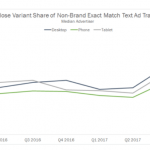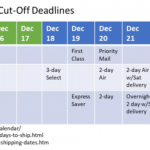Align your marketing org in 2018 with intelligent and integrated marketing campaigns
Integrated marketing campaigns may seem old-school, but contributor Kevin Bobowski explains why they’re essential for marketers who want to keep their marketing departments agile and efficient.
 Mention the idea of integrated campaigns to a group of marketers, and you’ll get a wide range of opinions. Some marketers love them and aspire to launch and deliver great integrated campaigns. But others think of old-school, slow-moving campaigns — à la TV or radio ads when “Knight Rider” was the rage.
Mention the idea of integrated campaigns to a group of marketers, and you’ll get a wide range of opinions. Some marketers love them and aspire to launch and deliver great integrated campaigns. But others think of old-school, slow-moving campaigns — à la TV or radio ads when “Knight Rider” was the rage.
It’s true — your mom and dad’s integrated marketing has no place in modern marketing. From its inception in the 1980s, integrated marketing came to be known as “360 branding,” “whole egg,” “relationship marketing,” “one-to-one marketing” and more.
And that may be the discipline’s biggest problem: It became a catch-all phrase for everything under the sun involving two or more channels or tactics. In trying to be everything to everyone, it became valuable to no one — a bit of rhetoric or a buzzword. But let’s not throw the baby out with the bathwater. There’s still great value there if we can rein it in.
Truly integrated marketing goes far beyond cross-channel or 360 branding. Here’s how the Data & Marketing Association defines integrated marketing today:
… an approach to creating a unified and seamless experience for consumers to interact with the brand/enterprise; it attempts to meld all aspects of marketing communication such as advertising, sales promotion, public relations, direct marketing, and social media, through their respective mix of tactics, methods, channels, media, and activities, so that all work together as a unified force. It is a process designed to ensure that all messaging and communications strategies are consistent across all channels and are centered on the customer.
Today’s integrated marketing strategy is everything you want to do, offer and be for your customers. Well-executed integrated campaigns run by agile marketers keep marketing departments efficient, high-performing and close to their customers. What CMO or CEO doesn’t want that?
Integrated marketing demands integration across teams
Ask any CEO about their biggest concern about marketing departments, and it often centers around two key issues. The first, measuring performance, is as prevalent as it was 20 years ago. The second, which we will cover today, is a lack of an integrated go-to-market across marketing.
When the content marketing team is running their own programs, the brand team is kicking off a different campaign, and the demand generation and field marketing is launching yet a different initiative to the sales organization. It’s enough to drive a CEO crazy. The CEO wants to see an integrated, streamlined approach to building a brand.
The CEO wants to see a machine that can be continually optimized and connected to the other departments for a more connected company. More importantly, he or she sees an integrated marketing campaign as a means to communicate innovation and value proposition in a consistent way to customers everywhere.
Why are integrated campaigns important? There are three reasons:
- The leverage to perform. We all know that every marketer, CMO and marketing department is under intense pressure to perform. The performance mandate is real, and they must find new and different ways to become more efficient and agile to meet customer and internal organization demands. All of this requires a special level of discipline and expertise.
- Cleaning up content marketing. Integrated campaigns drive a focused content marketing strategy. Today, content marketing is broken. Having an integrated campaign with a very specific persona, target market and performance goals helps.
- Serving across the entire customer life cycle. As the role of marketing evolves to own the entire customer life cycle, an integrated campaign delivers a better customer experience.
4 steps to building an effective integrated marketing campaign
Can you build an effective integrated marketing campaign in weeks rather than months and quarters? Yes. Can you build an integrated campaign that’s adaptable, flexible and responsive to market opportunities? Absolutely. So, let’s talk about the construct of an effective integrated marketing campaign.
1. The power of personas
There is absolute power in the persona, and it’s the secret sauce for a successful integrated campaign. Every company of any size needs to understand their customers, their pain points and what they need to be successful. Marketers need to build detailed message maps for personas and treat these message maps as living, breathing documents that we continually update.
The ongoing evolution and adaptability of your personas are essential and should be one of your most important marketing activities. Your personas must become part of the common vernacular across the company. This foundational understanding of your customer will inform not only marketing but operations, R&D and product as well.
2. Know your segment
Next, you need to be thinking about the segment of the market. Are you talking to prospects or customers, small businesses or global enterprises, and which geography?
It’s classic market segmentation. Add together a well-developed persona and a clear target market, and it will help you build the perfect piece of content.
3. Create smart content
Having a well-developed persona and a clear target market also will help you move content marketing from a standalone function to one that is fully integrated into the broader marketing mix and marketing technology stack. The convergence of SEO and content marketing supports the creation of smart content, which delivers a form of personalization at the top of the funnel for a more customized experience
4. Create once, promote everywhere (COPE)
Once you have smart content, it’s time to test it in the marketplace. As you continue to grow in scale, the next theme that we often talk about is COPE.
One of our customers found themselves in the never-ending battle of creating more and more content for every different purpose across every single marketing channel. What they learned was that the majority of the content wasn’t performing and/or on-brand. Sometimes it was inaccurate or irrelevant to what was happening across the business, and money was wasted. There was no measure of brand success, and overall it was a flop.
This is where the agile marketing comes into play. By focusing on one piece of content with consistent messaging, marketers can quickly iterate to find what matters in the market. We’re not talking about months and quarters. We’re talking about days and sometimes hours.
So instead of creating lots of different bits of content, what we’re now doing is spending more of our resources on amplifying the content in the marketplace and generating performance and results — a win for everybody.
Conclusion
Yes, integrated campaigns sometimes conjure up a notion of old-school marketing, but they’re more important than ever for modern marketers. Executed properly, integrated marketing campaigns allow marketing departments to get much more out of smaller teams.
Integrated campaigns help marketing teams adapt and build agile skill sets and an agile approach.
Opinions expressed in this article are those of the guest author and not necessarily Marketing Land. Staff authors are listed here.
Marketing Land – Internet Marketing News, Strategies & Tips
(18)













